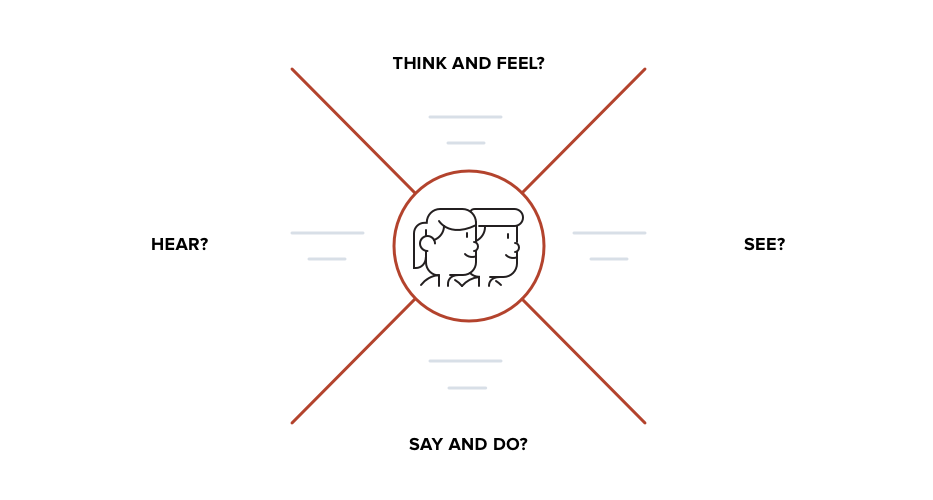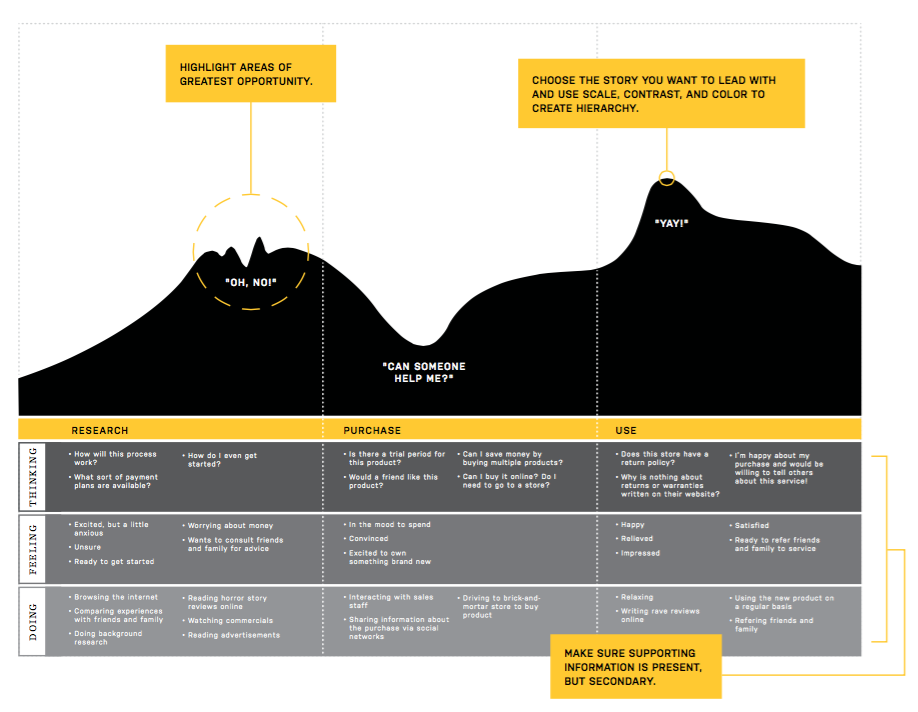No. 3: Understanding Your Audience Through Empathy and Research

This is the third installment of our series on the 12 Competencies of UX Design.
Think about the last time you had a seamless and enjoyable experience on a website or app. What did it feel like? How well did it help you accomplish a task?
Now think about the last awful experience you had while interacting with a digital product. What made it so painful and frustrating?
It’s safe to say that those two experiences were both visually appealing and generally nice to look at. Once you got beyond the flashy visuals, however, things changed.
The designers behind the awful experience probably didn’t envision it being awful. They wanted it to be easy to use as well as nice to look at. But somewhere between initial ideation and the final product, something went awry.
What did those designers miss along the way? It’s simple: they didn’t fully understand what users wanted, needed, and expected. They didn’t understand their audience.
The Importance of Research
There’s a saying among consultants and agencies: “You can’t read the label when you’re inside the jar.” Most of us within the design world are too close to the things we build to really understand what motivates users to use, or not use, our product or service.
Our assumptions about what users want and need often don’t match up with reality.
That’s why smart UX designers put research and empathy at the core of their design process. They understand that in order to design a product that serves both user and business needs, they first have to understand what those needs are — not from their own perspective, but from the perspective of the target audience.
Research helps bridge the gap between what a business wants and needs, and what their customers want and need. It keeps designers honest about how their decisions throughout the design process promote usability as well as business objectives. All in all, research is a key ingredient to charting a path to your desired outcome.
When conducting research, we usually ask these types of questions:
- What’s the real problem you’re trying to solve?
- What are your business objectives, and how will solving this problem help achieve those objectives?
- What are the strengths and weaknesses of your current solution?
- What constraints are you working around, such as timeline, budget, and leadership support?
- Who is your current target audience and ideal audience? What do users in different segments of your audience have in common?
- What are their attitudes about your product/service category in general? What are they looking for?
Research operates like a system of checks and balances for our gut instinct. Having great research helps designers successfully balance both user expectations and business objectives at every stage of the design process.
The Role of User Research in Building User Empathy
When we start to conduct user research specifically, our natural inclination is to start with quantitative data — the numbers. Quantitative user research helps us recognize where there might be an issue in a user’s workflow and identify possible points of friction.
In order to truly reduce friction for a user, however, we have to look at the story behind the data. What are the numbers trying to tell us?
Quantitative data points like click rate, page views, and traffic are all helpful in understanding a user’s experience after the fact — but they are just indicators. In the context of reducing user friction, these data simply tell us where to look.
By combining quantitative user data with qualitative user data, we start to get a much clearer picture of the story behind the numbers. This understanding of our audience on a deeper, more holistic level is what we call user empathy.
User empathy doesn’t always come naturally, which is why a critical part of our design process at Drawbackwards is conducting “empathy exercises”. These exercises help us and our clients get a clearer picture of what an end user might be thinking, feeling, and doing at a particular point in a workflow. Let’s take a look at some of the most effective types of empathy exercises.
Empathy Maps
Empathy maps are a great way to illustrate a user’s senses beyond just what they are thinking and doing. They help paint a more holistic picture of the target user as a person, and can help designers recognize the overall context of their state of mind.
Field Studies
A field study immerses designers in the life of a typical user by including them in their day. This is a great way to observe products “in the wild” and a means for understanding how external factors might influence a user’s decisions and motivations.
Customer Journey Maps
Source: MappingExperiences.com
Customer journey maps are a great way to visualize an end user’s changing emotions, pain points, and questions throughout a process or workflow. They are helpful when trying to understand where there may be friction and frustration. Customer journey maps also help designers recognize opportunities for improvement.
Customer and Stakeholder Interviews
Interviews are probably the easiest way to learn not just what your customers do, but why they do it. Even if you don’t have direct access to customers, customer-facing teams like Sales and Support can often provide anecdotes to help ground design assumptions in reality. Interviews conducted in real time (either over the phone or in-person) naturally provide more depth and context than a traditional written survey.
Relevance and Continuous Research
In a letter to a fan, UP and Monsters Inc. director Pete Docter shined a light on what makes Pixar films consistently great. He said, “It takes a lot of work (and rework, and rework and rework) to get [a film] right. And even then quite often we’re not 100% pleased. As John Lasseter likes to say, our films don’t get finished, they just get released.”
The same goes for great UX design, since both user and business expectations, needs, and wants are constantly changing and adapting. What your audience prefers today might be different tomorrow. Your competitors are continuously changing the way they serve their target customers’ needs, which influences what users expect (and what you need to deliver).
For example, consider the radical changes the iPhone has undergone since the release of Apple’s inaugural smartphone in 2010. The company has released 16 new models in just eight years, along with regular iOS updates between hardware releases. Meanwhile, dozens of competitors began releasing their own smartphones, upping the ante for Apple designers.
Despite the onslaught of competition, Apple remains the gold standard for smartphones and other devices because they recognize the importance of consistent research and innovation. In order to stay relevant in the face of rapidly changing user demands, UX designers and businesses alike need to take a page out of Apple’s book and put research and empathy at the core of their strategy.
The Bottom Line
Delivering exceptional UX design begins and ends with understanding your audience — not just at the beginning of a project, but at every stage of the design process. Without it, you won’t know what steps you need to take to ultimately achieve your vision.
Research and empathy is what will keep you honest and focused on both user needs and business goals throughout the design process.
A deep understanding of what matters most to your audience is the key to delivering consistently valuable experiences, and what will ultimately help you stay relevant now and in the future.

